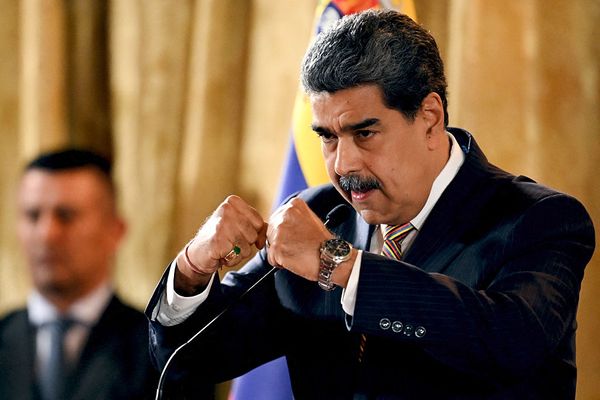
International calls for a ceasefire in Gaza are growing louder as the scale of destruction and humanitarian suffering visited on its population becomes ever clearer. Others, including the UN, call for at least a “humanitarian pause”. Is either likely? And could they pave the way to peace?
Ceasefires, like peace processes, only work when both belligerents are either willing or can be persuaded to accept one and stick to it. In Gaza, this looks unlikely. In Syria in 2015-16 and in Sudan this year, similar attempts have failed dismally. In Ethiopia, a ceasefire with Tigray was achieved only after the two sides had fought each other to a standstill, at the cost of tens of thousands of lives.
At this stage, both the Israeli government and Hamas probably calculate they have more to gain from a continuation of fighting.
Israel’s stated war aim is to destroy Hamas as a fighting and political force and free all the Israeli hostages. An immediate ceasefire would hinder at least the first. It would also signal that Israel accepts restraint on its retaliation, unacceptable to a government – and people – shocked by the slaughter inflicted on them by a group explicitly committed to destroying their state. Echoes of the past are too strong. For many, Israel’s very survival depends on hitting their enemies harder than they are hit. So even if a ceasefire involved the release of all Israeli hostages, it would not suffice. The implication that it would be followed by negotiations with Hamas is, for many Israelis, still beyond the pale.
Hamas’s war aim (unstated, and therefore speculative) is presumably to provoke Israel to commit such barbarities in response to its terrorist attack that it loses international support and becomes, ultimately, forced to make major concessions to the Palestinians in the form of a genuinely autonomous state. The longer the fighting continues, the more Israel’s moral case weakens. Even some Israelis recognise that their window of opportunity for retaliation is limited.
The challenge is that they cannot destroy Hamas without destroying Gaza; and in destroying Gaza they risk undermining international support for Israel itself.
The pictures reaching the outside world are graphic: much of the Gaza Strip lies in ruins, its inhabitants living in fear of imminent death wherever they try to shelter. Hence the case for a humanitarian pause, or humanitarian pauses as the UN resolution and EU conclusions specify, is stronger. Both common humanity, given the level of suffering, and the need to retain international backing, should persuade Israel to allow humanitarian aid – food, water, medicines – to reach the people of Gaza as swiftly as possible, a case urged by both Rishi Sunak and Keir Starmer.
Could the two sides be forced into a full ceasefire by their backers? Unlikely. While the US exerts considerable pressure on Israel behind the scenes, it cannot impose a solution. Qatar is active in trying to negotiate for the release of hostages. Backers of Hamas, especially Iran, benefit from continued conflict.
In the short term, therefore, a ceasefire sounds attractive, but it will not fly.
Still, the risks of unrest in the West Bank, a conflict with Hezbollah or wider regional contagion across the Middle East will increase international pressure to stop the fighting. History suggests that you cannot destroy terrorism by terrorising a whole population. Hamas have so embedded themselves throughout the community, physically and mentally, that the Israeli assault seems to strengthen rather than weaken their support. A people driven to desperation will support desperate actions.
And things have changed. Hamas’s attack shattered the assumption of Israel’s government that a growing Palestinian population could be perpetually and peacefully marginalised in an ever-shrinking area. The Palestinian Authority has not helped itself. Its corruption and failure to hold elections or retain a democratic mandate has fatally weakened its credibility and ability to negotiate with Israel, encouraging many Palestinians to shift support to Hamas as the only party really standing up for them.
But few Israeli politicians have done more over the past decade to undermine the viability of a two-state solution than the prime minister, Benjamin Netanyahu, through his government’s persistent and increasingly strident support for Jewish settlers in the West Bank. Under the present rightwing coalition, that has accelerated, leaving Palestinians feeling they have nowhere to go except submission or armed resistance. A return to the status quo ante is no longer possible, and Israel is left without a coherent strategy for the future.
There are, or were, certainly voices in Israel for an alternative peace, individuals and groups committed to building understanding and closer links between Palestinian and Jewish people. But these are not heard in government. Netanyahu is beholden to political allies who are as committed to removing all Palestinians from the West Bank as Hamas is to removing Israel from the Middle East.
This exacerbates the polarisation, and calls into question whether a two-state solution is still a viable endpoint, or whether only a one-state solution, with Israelis and Palestinians full and equal citizens in a single state, would create the necessary pressures to moderation to bring lasting peace in the region.
In the meantime, Hamas has a clear strategy, though with increasingly brutal consequences for both Israelis and Palestinians. But Israel’s strategy in response is profoundly flawed. Without a clear and viable endpoint, neither ceasefires nor humanitarian pauses will bring an end to the conflict any time soon.
Nicholas Westcott is professor of practice in diplomacy at Soas University of London and former managing director for the Middle East in the EU’s European External Action Service







